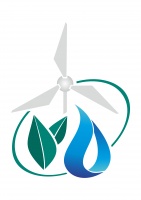Using polymeric film for anti-filtration canal panning
| Title | Using polymeric film for anti-filtration canal panning |
|---|---|
| Category of tools | System for enhancing water availability |
| Field of application |
|
| Usability of practice for adaptation to climate change | High |
| Implemented by | Ministry of Reclamation and Water Management of the USSR, “Golodnostepstroy” Irrigation System Administration |
| Used by |
Country: Uzbekistan Province: Sirdaryo Region |
| Practice also applied in the following localities |
Dzhizakh Region; Right Branch of the Southern Golodnostepsk Canal (SGC) |
| Local specifics |
|
| Photos |
|
| Practice usage period |
Start date: 01.01.1965 End date: 31.12.1968 |
| Problem solved through this practice |
Application of the technique sharply increases local water availability due to enhanced efficiency of irrigation networks (systems). Double coating of canal sides and bottom results in practically complete elimination of water filtration (0.97-0.98 per canal). Crop productivity grows thanks to better water availability, uniformity and timeliness of water supply and distribution. |
| Tools used in the practice |
Technology of anti-filtration canal panning with polymeric film. |
| Description of the practice and its results |
There are different ways to prevent water filtration in distribution canals: anti-filtration canal coating with cast concrete, reinforced concrete plates, polymeric film, etc. Separate use of these materials does not yield expected outcomes. Fragility and lack of durability of polymeric film led to suspending its use. Actions: In 1965-1968, the mechanized (automated) way of canal panning with reinforced concrete plates and/or cast concrete in combination with polymeric film coating was introduced. Initially, the canal’s perimeter was covered with black polyethylene film overlaid with reinforced concrete plates and/or cast concrete. Experience shows that such canals are durable and are still operating today, although in recent years operational costs have significantly decreased. Results: Canals built with reinforced (cast) concrete panning in combination with polymeric film coating lose almost no water. For example, in UR-24 and UR 25-9 Canals in Pakhtakor District -- where such panning was used for the first time – water losses dropped 20-30 times, and operational costs also sharply decreased compared to other facilities with different anti-filtration coating. Water losses on the Right Branch of the SGC (discharge capacity – over 50 m3/s) amounted to only 1.8 l/s per 1 km. |
| Lessons learnt and recommendations made |
In recent years, Uzbekistan has been rendering significant attention to rehabilitation and refitting of its hydro-reclamation networks and even established a special Reclamation Fund. In this regard, it is necessary to re-launch the practice of combatting water loss in supply canals by means of reinforced (cast) concrete coating combined with polyethylene film coating, especially with the account that domestic plants are currently manufacturing large volumes of polyethylene products. |
| Source of practice |
Domestic tools (outcomes of research by domestic R&D organizations) |
| Brief information on the project |
Project title: Combatting water filtration in canals. Project duration: 1965-1968. Project goal and objectives: reduce water losses due to filtration in irrigation canals. Project beneficiaries: population in SGC area. Project implementer: “Golodnostepstroy” Irrigation System Administration. |
| Funding source | Government of Uzbekistan |
| Information sources |
|
| Form submission date | 04.05.2018 |
| Print Compare with other practice |




